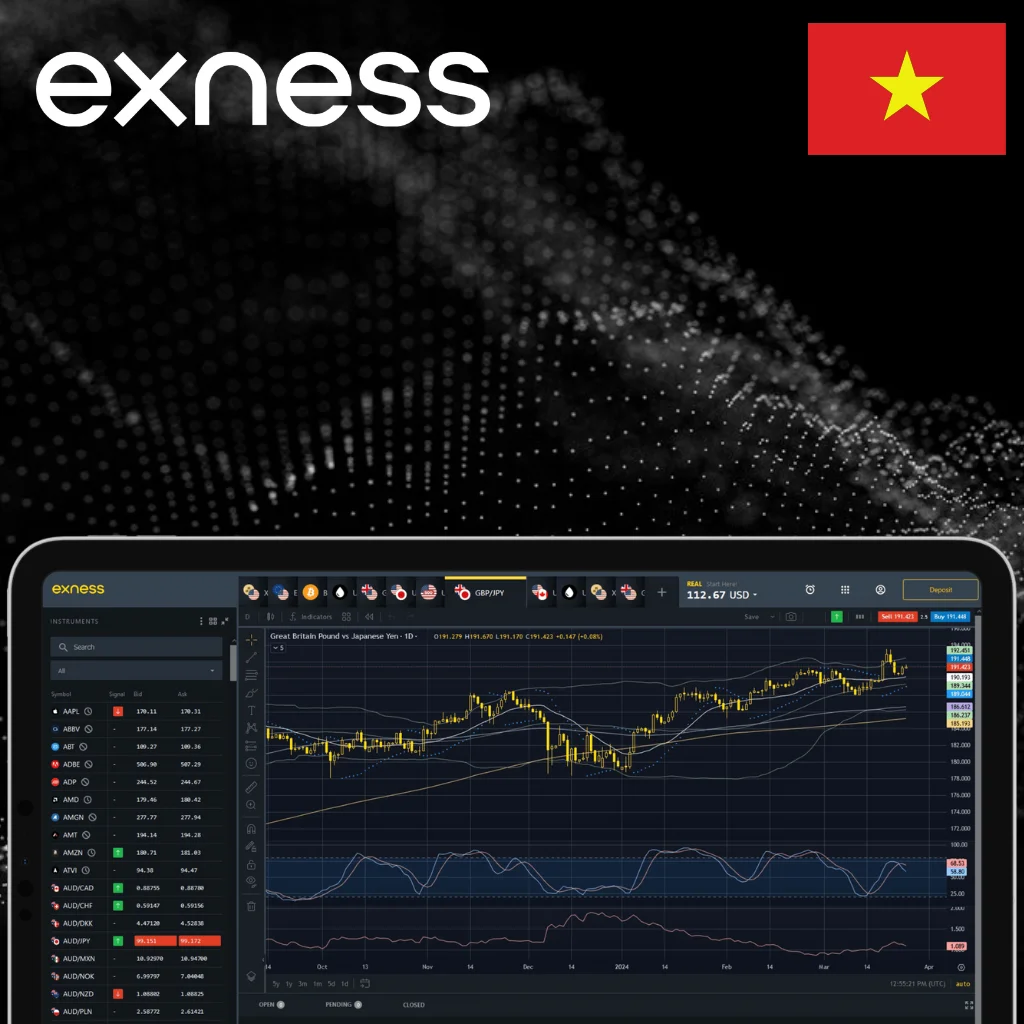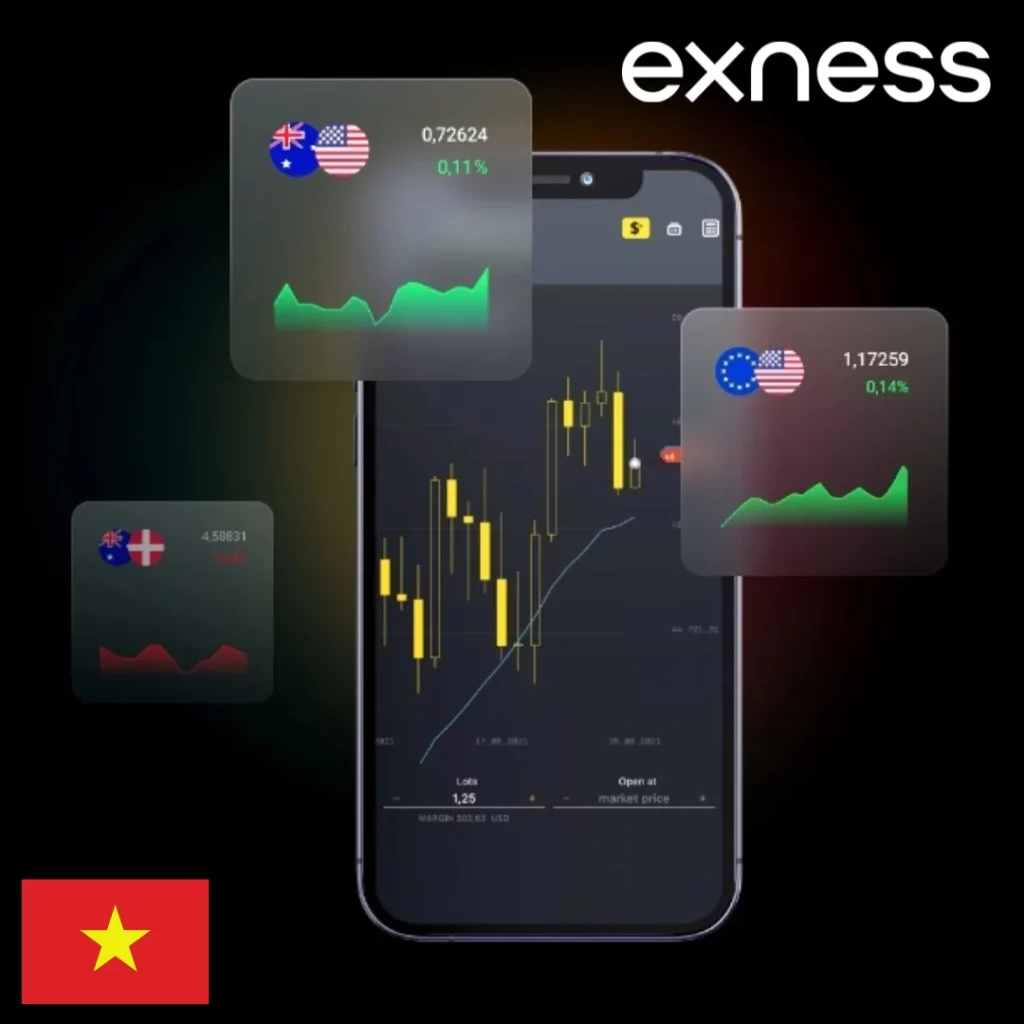- What is Spread and Why is it Important in Forex?
- Types of Spread on Exness
- Types of Trading Fees on Exness
- How Does Spread Affect Trading Profits?
- Trading Strategies Based on Exness Spread
- Factors Affecting Spread on Exness
- Comparing Exness Trading Fees with Other Brokers
- Strategies to Reduce Trading Costs on Exness
- Transparency in Trading Fees
- How Do Fees Impact Overall Profitability?
- Frequently Asked Questions
What is Spread and Why is it Important in Forex?

Spread is simply understood as the difference between the buying price (Bid) and the selling price (Ask) of a currency pair. This is one of the most basic forms of fees that anyone participating in the market must pay.
- Practical example: If the EUR/USD pair has an Ask price of 1.1002 and a Bid price of 1.1000, the spread will be 0.0002 (i.e., 2 pips).
- Meaning: The lower the spread, the smaller the trading cost. Conversely, a high spread can reduce profits, especially for those who frequently open and close positions.
At Exness, spreads are quoted transparently, allowing traders to easily monitor and calculate. This is an important factor when comparing costs between different brokers, as spreads may also vary across Exness account types.
Types of Spread on Exness
Exness offers different types of spreads, suitable for each strategy and capital level, and resources like the Exness leverage guide help traders choose the most appropriate option:
Fixed Spread:
- Does not change regardless of market volatility.
- Suitable for those who want to easily predict costs.
- Limitation: usually higher than floating spreads in calm market conditions.
Floating Spread:
- Continuously changes according to liquidity and volatility.
- When the market is active, spreads can widen significantly.
- Common in most Exness accounts, allowing traders to take advantage of low spreads during high-liquidity trading hours.
Short comparison table:
| Type of Spread | Advantages | Limitations |
|---|---|---|
| Fixed | Easy to calculate, stable | Usually higher, less flexible |
| Floating | Low during peak hours | Can widen significantly when the market is volatile |
Types of Trading Fees on Exness
Besides spreads, traders must also take into account several other costs. Exness trading fees include:
- Spread fee: The difference already analyzed above.
- Swap fee (overnight): Applied when holding positions overnight. The fee depends on the type of asset, the interest rate differential between the two currencies, and the trading time.
- Commission fee: Appears in some account types such as Zero or Raw Spread, usually calculated per lot.
- Deposit and withdrawal fees: Depend on the payment method. Most of Exness’s payment channels do not charge fees, but some third-party services may apply their own charges.
How Does Spread Affect Trading Profits?
Although spreads may seem small, they directly impact trading outcomes.
- Opening cost: When a position is opened, the trader immediately bears the cost of the spread. Profit only appears when the price moves in the expected direction and surpasses the initial spread level.
- Impact on scalping: Short-term trading strategies rely heavily on spreads. An increase of just 1–2 pips can significantly reduce effectiveness.
- Long-term trading: Spreads have less influence since the market movement is much larger than the cost of the spread. However, it is still important to consider when choosing account types and trading sessions.
Example: A trader executes 50 trades per day with an average spread of 1 pip. The total cost will be 50 pips. If 1 lot of EUR/USD equals USD 10 per pip, the cost amounts to USD 500, a calculation that can be easily tracked on Exness MT5.

Trading Strategies Based on Exness Spread
Understanding Exness spreads helps traders build effective strategies:
- Choose high-liquidity sessions: Usually during the London and New York sessions. Floating spreads are typically narrowest during this time.
- Use the right account type: Raw Spread or Zero accounts are suitable for scalpers. Standard or Pro accounts are better for long-term trading.
- Avoid major news releases: When economic data is published, spreads can widen significantly. Traders should reduce lot size or stay out of the market.
- Manage position size carefully: The larger the volume, the stronger the spread’s effect. Careful calculation is required before opening multiple positions simultaneously.
Factors Affecting Spread on Exness
Spreads do not always remain fixed. Several factors play a role, and understanding them is especially important when participating in Exness social trading:
- Market liquidity: Major pairs such as EUR/USD usually have lower spreads compared to exotic pairs.
- Trading time: When fewer participants are active, spreads tend to widen.
- Volatility: The higher the volatility, the wider the spread is likely to be.
- Account type: Spreads on Raw Spread accounts are close to 0, but commission fees apply.
- Financial instrument: Forex instruments are usually cheaper compared to gold or oil, which are highly volatile.
This list shows that not only the broker but also market conditions directly determine trading costs.
Comparing Exness Trading Fees with Other Brokers
For a more objective view, Exness fees should be compared with its competitors, which also helps confirm whether traders consider Exness reliable.
Basic fee comparison (average values):
| Broker | Average EUR/USD Spread | Commission/lot | Swap | Deposit/Withdrawal Fees |
|---|---|---|---|---|
| Exness | 0.0–1.0 pip (depending on account) | 3.5–7 USD | Yes | Mostly free |
| IC Markets | 0.1–1.0 pip | 6–7 USD | Yes | Possible fees |
| XM | 1.0–1.6 pip | None | Yes | Some channels free |
| FXTM | 1.0–1.5 pip | 4–6 USD | Yes | Possible fees |
Key highlights of Exness compared to others:
- Lower spreads during peak trading hours.
- Flexibility in accounts, allowing choice between commission or spread-based costs.
- More convenient deposit/withdrawal policies than many traditional brokers.
Strategies to Reduce Trading Costs on Exness
Optimizing costs is not only about choosing the right account type but also combining multiple methods.

- Choose the appropriate account type: Raw Spread/Zero: Suitable for scalping and large volumes, since spreads are nearly zero, with only commission applied. Standard/Pro: Suitable for long-term trading, less affected by commission fees.
- Take advantage of low-spread sessions: Trade during the London and New York sessions, when the market has high liquidity.
- Manage swap effectively: Limit holding positions overnight if swap fees are high. For pairs with positive swap, traders can take advantage of it to earn extra profit.
- Monitor economic news: Avoid opening positions right before and after major data releases, when spreads are likely to widen sharply.
Transparency in Trading Fees
One of the aspects highly valued by traders is transparency. Exness spreads and other fees are displayed directly on the platform, not hidden in quotes.
- Price tables are updated in real time.
- Commission and swap fees are clearly calculated on each order.
- Deposit/withdrawal policies are public, with no additional hidden charges.
This helps traders calculate costs in advance before making decisions and avoid unexpected surprises.
How Do Fees Impact Overall Profitability?
Trading costs are often overlooked at the beginning, but in the long run they can account for a large portion of results.
- Scalping: If the spread increases by just 1 pip, profits may decrease by hundreds of USD per month.
- Swing trading: Swap fees can take up a significant share when positions are held for days.
- Large volumes: When trading many lots, even a small commission adds up to a large amount.
Therefore, carefully analyzing Exness trading fees helps optimize strategies, balancing between potential profits and actual costs.

